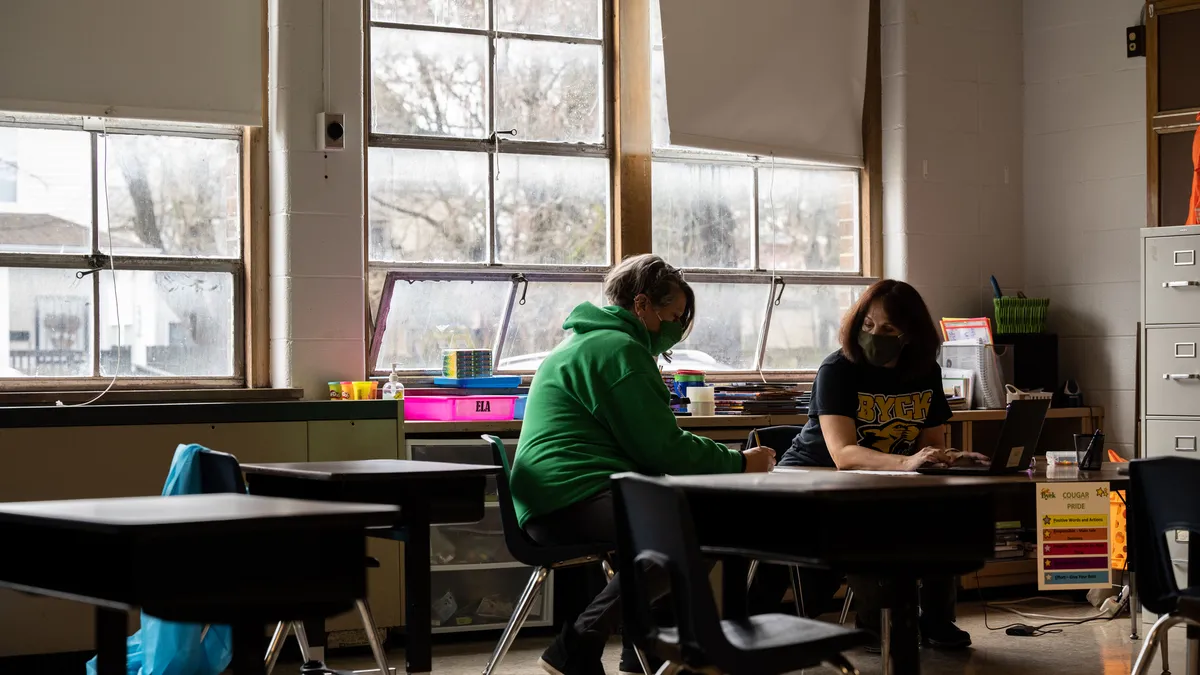Dive Brief:
-
Rather than sticking to traditional "sit and get" staff meetings, administrators should plan out approaches that offer opportunities for meaningful collaboration and engagement, Katie Novak, an education consultant and former superintendent, and Mike Woodlock, a high school principal and education consultant, write for Edutopia.
-
Novak and Woodlock suggest building time into staff meetings to collaborate and discuss issues, noting that virtual meetings can include chat posting options to allow participants to share their thoughts. Meeting organizers should also ask for feedback and give teachers a voice, which can increase buy-in and engagement in decisions and processes.
-
Best practices can also be showcased at faculty meetings by allowing teachers opportunities to take a few minutes to share ideas, best practices, strategies and takeaways from professional development with their peers. Additionally, providing time for mindfulness and reflection can boost social-emotional support for faculty.
Dive Insight:
Staff meetings are a great platform to encourage teacher voice, which can go a long way toward improving school culture. To do this, meeting leaders should strive to create a climate of trust that fosters and supports teachers' belief in their ability to make an impact on students.
In positive school cultures, educators develop their voice through listening as much as by talking. Being mindful of tone and thoughtful about the ways questions are asked can have a significant impact on how effectively a leader's message is delivered, and a bottom-up decision-making approach can empower teachers, facilitate greater professional development, and improve engagement and retention.
Impact Academy, a program at Orchard Lake Elementary School in Lakeville, Minnesota, was founded with that goal top-of-mind. The idea is that schools should be more focused on personalized learning and teacher collaboration while relying less on top-down decision-making. When the program launched in 2017, its teachers were given more autonomy to make decisions around eliminating walls between cohorts of students to create open classrooms that encourage collaboration and engagement.
Giving teachers a voice in meetings is only part of the positive culture equation. Motivating educators with achievable goals and the time and space to build connections with their peers can go a long way toward strengthening school culture and reducing staff stress. Researchers like Visible Learning’s John Hattie believe a shared sense of efficacy among teachers has a more powerful impact on learning than socioeconomic status. But to achieve that, teachers also need blocks of time set aside to allow for meaningful planning and reflection.





 Dive Awards
Dive Awards




